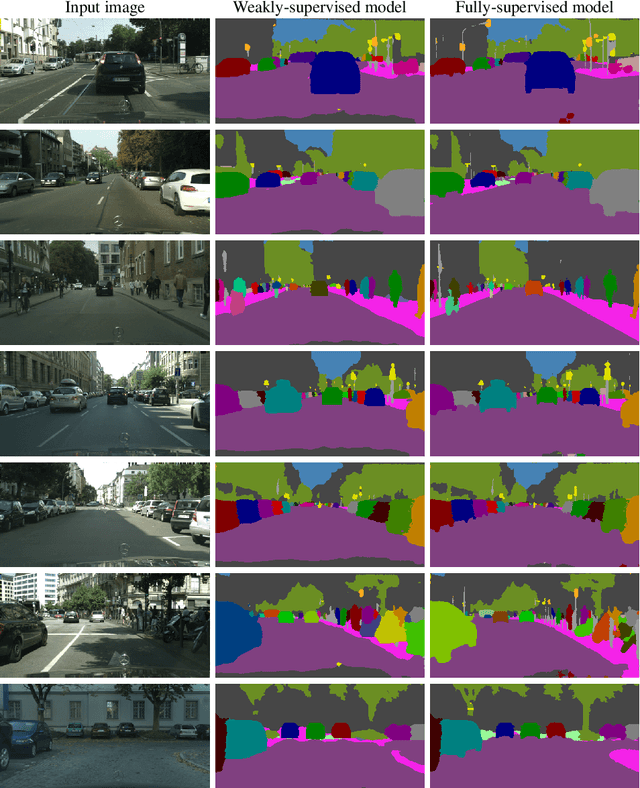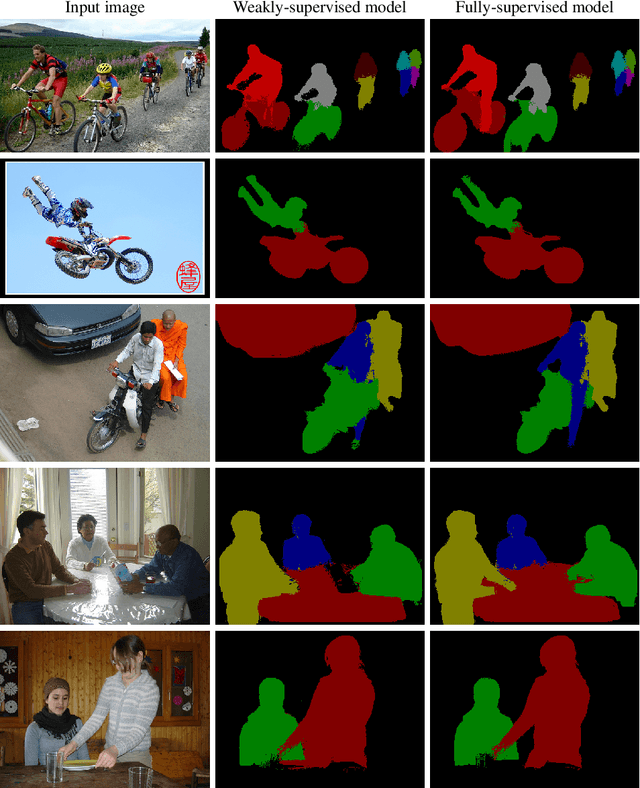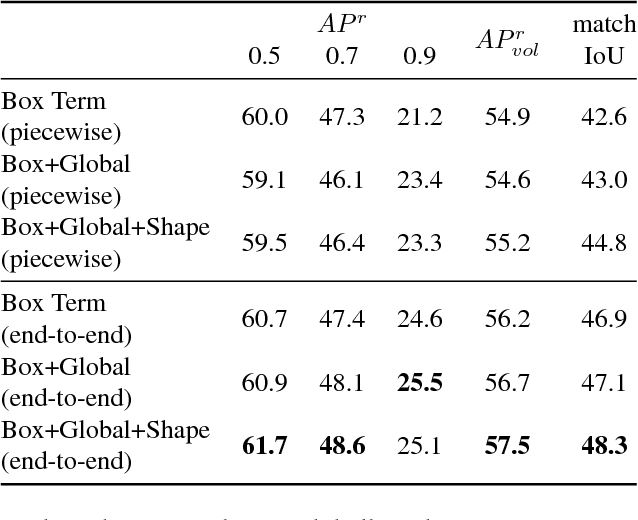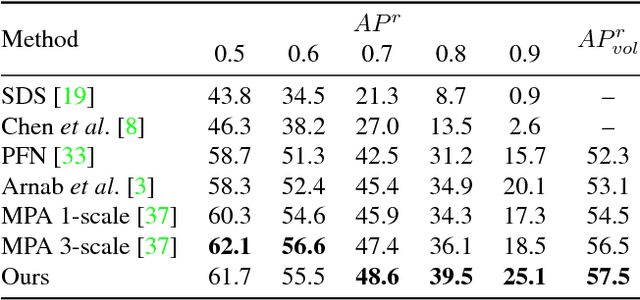Philip H. S Torr
Weakly- and Semi-Supervised Panoptic Segmentation
Aug 10, 2018


Abstract:We present a weakly supervised model that jointly performs both semantic- and instance-segmentation -- a particularly relevant problem given the substantial cost of obtaining pixel-perfect annotation for these tasks. In contrast to many popular instance segmentation approaches based on object detectors, our method does not predict any overlapping instances. Moreover, we are able to segment both "thing" and "stuff" classes, and thus explain all the pixels in the image. "Thing" classes are weakly-supervised with bounding boxes, and "stuff" with image-level tags. We obtain state-of-the-art results on Pascal VOC, for both full and weak supervision (which achieves about 95% of fully-supervised performance). Furthermore, we present the first weakly-supervised results on Cityscapes for both semantic- and instance-segmentation. Finally, we use our weakly supervised framework to analyse the relationship between annotation quality and predictive performance, which is of interest to dataset creators.
Pixelwise Instance Segmentation with a Dynamically Instantiated Network
Apr 07, 2017



Abstract:Semantic segmentation and object detection research have recently achieved rapid progress. However, the former task has no notion of different instances of the same object, and the latter operates at a coarse, bounding-box level. We propose an Instance Segmentation system that produces a segmentation map where each pixel is assigned an object class and instance identity label. Most approaches adapt object detectors to produce segments instead of boxes. In contrast, our method is based on an initial semantic segmentation module, which feeds into an instance subnetwork. This subnetwork uses the initial category-level segmentation, along with cues from the output of an object detector, within an end-to-end CRF to predict instances. This part of our model is dynamically instantiated to produce a variable number of instances per image. Our end-to-end approach requires no post-processing and considers the image holistically, instead of processing independent proposals. Therefore, unlike some related work, a pixel cannot belong to multiple instances. Furthermore, far more precise segmentations are achieved, as shown by our state-of-the-art results (particularly at high IoU thresholds) on the Pascal VOC and Cityscapes datasets.
 Add to Chrome
Add to Chrome Add to Firefox
Add to Firefox Add to Edge
Add to Edge